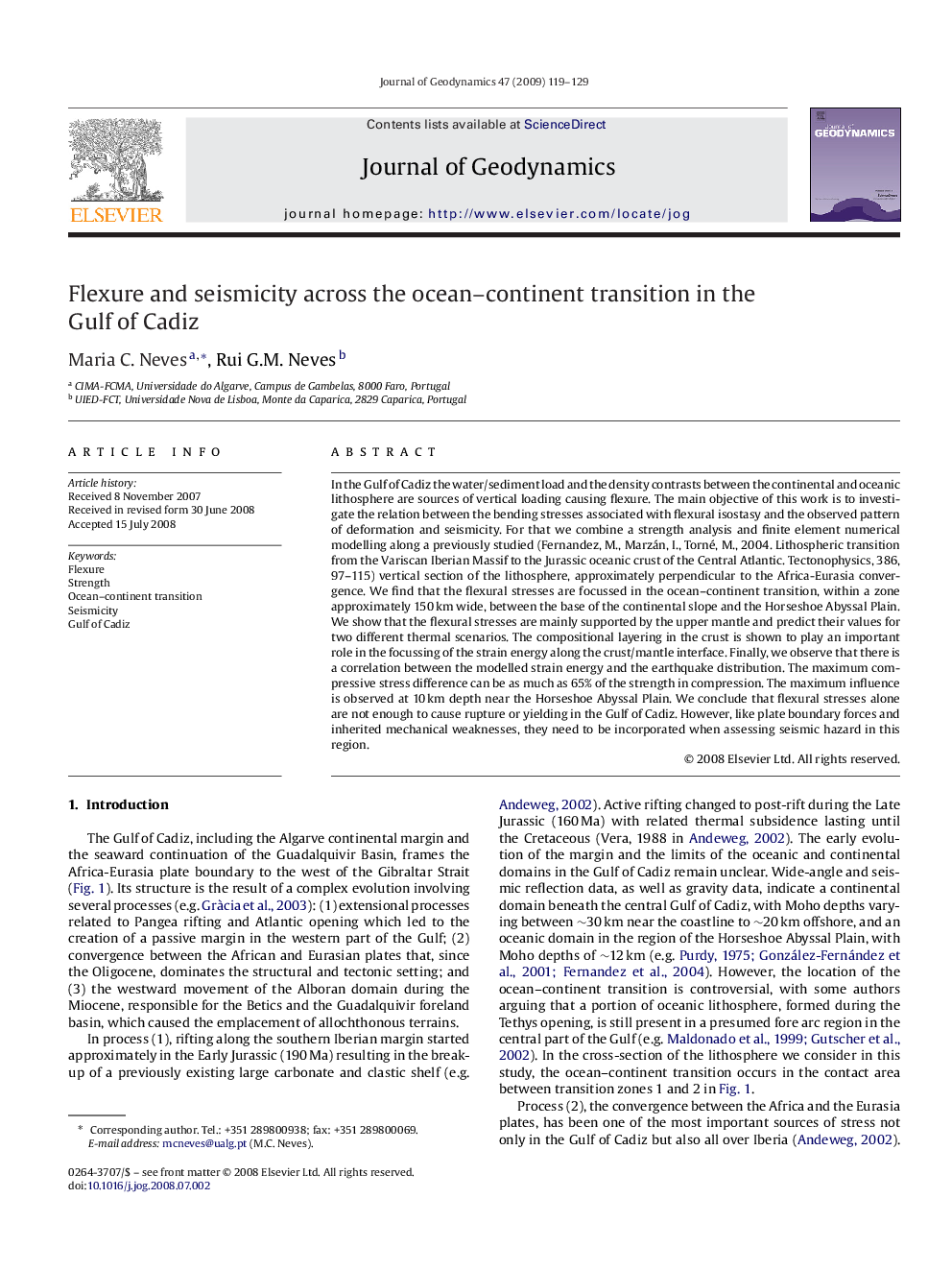| کد مقاله | کد نشریه | سال انتشار | مقاله انگلیسی | نسخه تمام متن |
|---|---|---|---|---|
| 4688596 | 1635801 | 2009 | 11 صفحه PDF | دانلود رایگان |

In the Gulf of Cadiz the water/sediment load and the density contrasts between the continental and oceanic lithosphere are sources of vertical loading causing flexure. The main objective of this work is to investigate the relation between the bending stresses associated with flexural isostasy and the observed pattern of deformation and seismicity. For that we combine a strength analysis and finite element numerical modelling along a previously studied (Fernandez, M., Marzán, I., Torné, M., 2004. Lithospheric transition from the Variscan Iberian Massif to the Jurassic oceanic crust of the Central Atlantic. Tectonophysics, 386, 97–115) vertical section of the lithosphere, approximately perpendicular to the Africa-Eurasia convergence. We find that the flexural stresses are focussed in the ocean–continent transition, within a zone approximately 150 km wide, between the base of the continental slope and the Horseshoe Abyssal Plain. We show that the flexural stresses are mainly supported by the upper mantle and predict their values for two different thermal scenarios. The compositional layering in the crust is shown to play an important role in the focussing of the strain energy along the crust/mantle interface. Finally, we observe that there is a correlation between the modelled strain energy and the earthquake distribution. The maximum compressive stress difference can be as much as 65% of the strength in compression. The maximum influence is observed at 10 km depth near the Horseshoe Abyssal Plain. We conclude that flexural stresses alone are not enough to cause rupture or yielding in the Gulf of Cadiz. However, like plate boundary forces and inherited mechanical weaknesses, they need to be incorporated when assessing seismic hazard in this region.
Journal: Journal of Geodynamics - Volume 47, Issues 2–3, March 2009, Pages 119–129